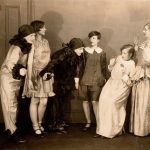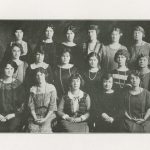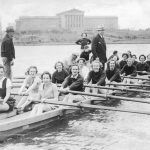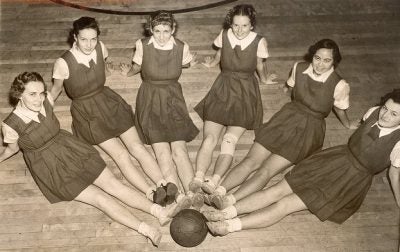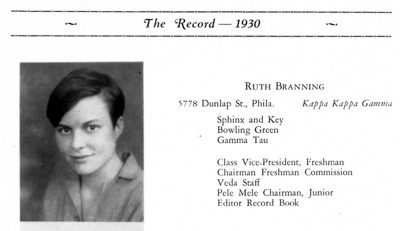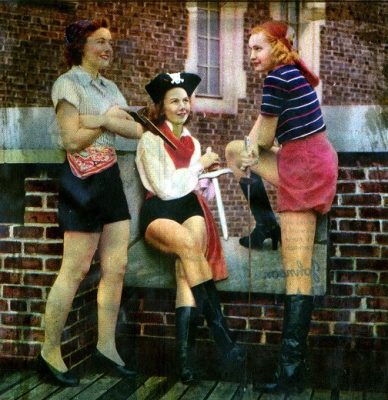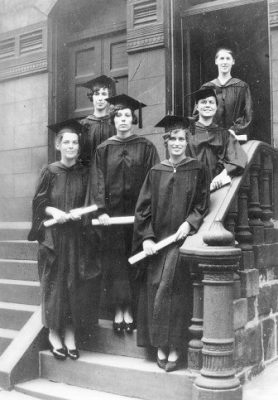| Name/Origin | Quotation | Picture |
|---|---|---|
| Joan Myerson Shrager, 1960 B.S. in Ed. | My mother, a 1930 Penn grad, remembers being chased out of class by a male professor who shouted at her, “I don’t teach women!” All this is in sharp contrast to my children’s experiences at Penn in the ’80s. | |
| Katherine O’Kane Jones, 1930 B.S. in Ed.; 1934 A.M.; Assistant Dean of Women, 1931-1941 and 1954-1960 | …after the College for Women was established there were a great many more things, in fact, an infinite number of things that women could do. | |
| Charlotte Flack, 1930 B.S. in Ed. | When women in colleges first began to show an active interest in athletics the general tendency was to imitate the men,-develop strong varsity teams for a few girls and sponsor intercollegiate competition. But fortunately they discovered that they were starting at the wrong place-they were developing the apex of the triangle rather than the broader base which would include many women. About the same time women’s athletic associations sprang up. Intra-mural programs were sponsored. … They adopted a slogan, “A Team for Everyone, Everyone on a Team.” | |
| Ruth Branning Molloy, 1930 B.S. in Ed. | We, the women of this University, were not matriculated into equal studenthood, with a dormitory to lie down in, a room of our own in which to “sing Pennsy songs to the banjo,” nor with freedom of our rosters. We were told we were neither beautiful nor desirable, but we thrived (sometimes scornfully) on scorn, and somehow have achieved… | |
| Ruth Branning Molloy, 1930 B.S. in Ed. | My memories: men had to bow to women at Alumni Day … my freshmen year was the first time women were allowed to go to football games, and we were allowed to cheer (at other schools they said women’s voices were too shrill) … no smoking was allowed for women on campus so we smoked in the ladies room … I wore pants only to play sports … we had a ‘Pirates Ball’ dance where women dressed as pirates and danced with each other. Someone took a picture of a woman in a costume that showed her legs and a prisoner started writing her and that was the end of the Pirates Ball! … the Gazette devoted an issue to women and men objected so they never did it again … ‘Drink A Milkshake at daybreak’ was a popular song back then so I did, and felt like a true Penn student!” | |
| Ruth Branning Molloy, 1930 B.S. in Ed. | In spite of the long coolness, the years of banishment to the back stairs, I find an unexpected warmth in a consideration of the early years. If we, the women, had had everything from the very beginning, what would there have been to fight for, to yearn over, to wait for, finally to exult upon, in this walk around the block, this miracle of land acquired? The tired truth of discrimination on the part of some powerful reactionaries is now one for the history book. | |
| John Harrison Minnick, Dean of the School of Education, 1921-1948 | You now face a far more difficult situation. Although you are prepared to serve, there is but little demand for your service. Perhaps there is no other condition which tends more strongly to break one’s spirit. However, I have faith that society will adjust itself in the near future and that the same courage which you have manifested during the past four years will help you find your place in the new order of things. | |
| Rebecca Jean Brownlee, 1934 B.S. in Ed.; 1936 A.M.; 1942 Ph.D.; 1986 LL.D. (honorary); Dean, College of Liberal Arts for Women, 1960-1975; Dean of Advising Services, School of Arts and Sciences, 1975-1977 | The program was not for dilettantes! | |
| Doris Elmer Price, 1939 B.A. (College for Women); 1941 A.M. | College has by no means laid out a restricted course for our lives, rather it has suggested a theme around which we may mobilize our own thoughts, our own reason, and our own imagination. |
Women at Penn: Quotations 1930-1939
Dedicated to the memory of Ruth Branning Molloy, B.S. in Ed. 1930

